Text
Update - Day 11
Here are some pictures of the disgustingness that was yesterday or the day before - check out the whopper on the middle of my chin - lovely. It's calmed down a little now and I will post pictures maybe tomorrow or on Saturday. I've noticed my skin has got quite dry around my nose - I've been applying quite a lot of moisturiser around it. My nose and forehead have also become less oily but not massively so - I'm hoping that will change soon!
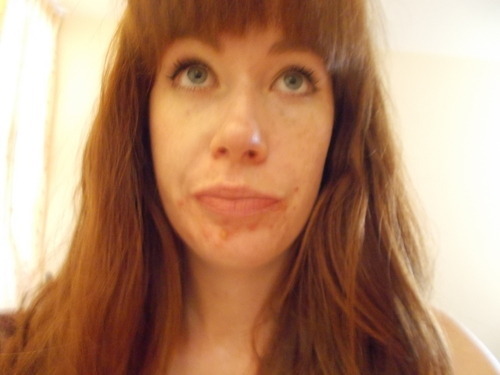
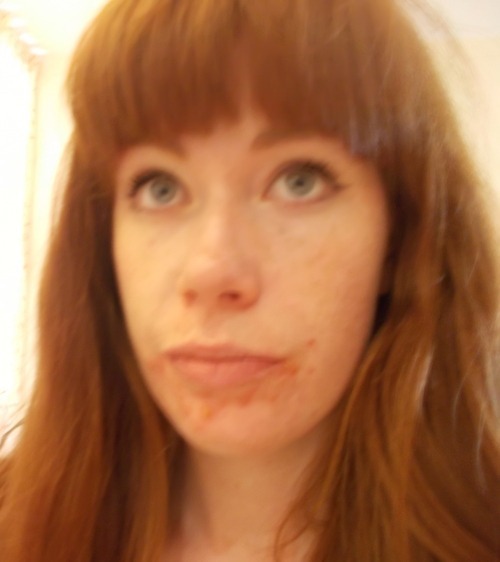
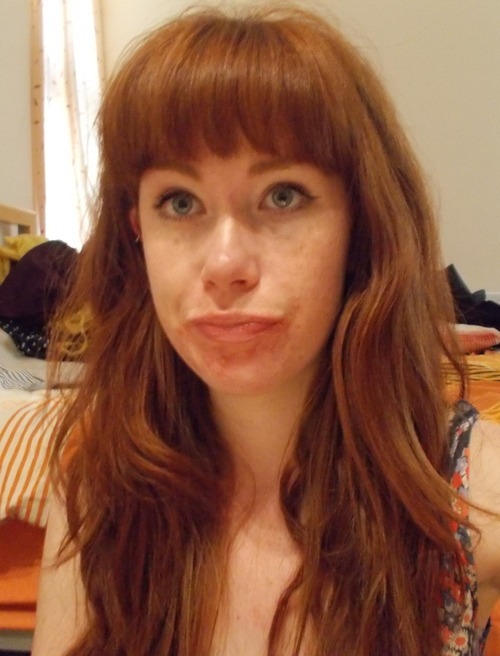
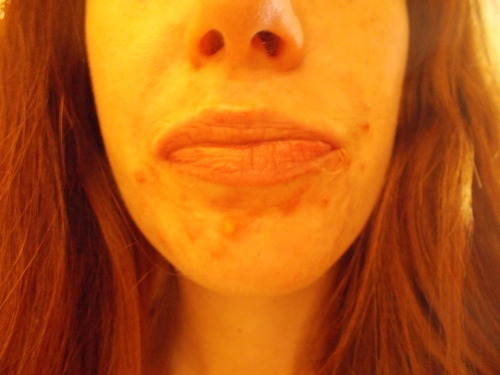
0 notes
Text
Ew I've got a huge green(!?) scab on my chin - wtf!? - how do you get green scabs yuk! Yay Roaccutane fun.
0 notes
Note
May I ask where are you from? Lovely hair colour :D
Aw thanks very much! I'm English but my family on my mum's side came from Norway and my great grandma apparently had exactly the same hair colour as me - my dad was also a redhead but a lot lighter than me :)
0 notes
Text
Day 9
Some of the spots have started to heal and they've gone very scabby, which looks absolutely disgusting but I guess scabbing is good!? The picture shows this below - sorry for no make-up at all and looking like I'm completely away with the fairies - not good!
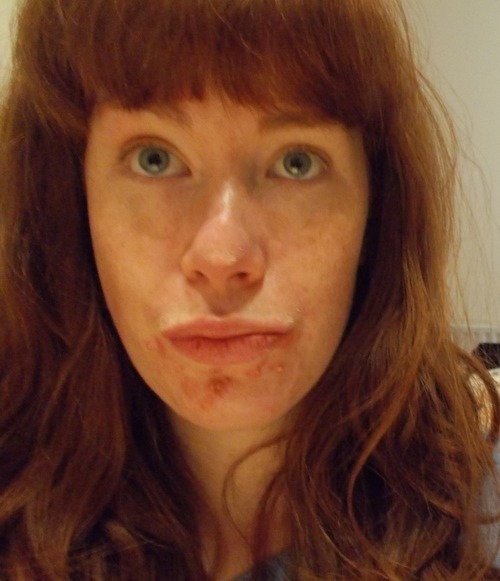
#accutane#roaccutane#isotretinoin#inflamed acne#acne#spots#hormonal acne#chin acne#scabs#initial breakout#10mg#breakout
0 notes
Text
Day 8 – End of Week 1
A bit of a random day to start but hey it’s only just over a week so still very much early days. As can be seen from the photo I’ve tried to hone in on the real problem area – a very attractive, pustular-ridden chin – yum (the picture doesn't show how bad it looks)! I’ve learnt over the past couple of days that popping spots (particularly on Roaccutane) literally makes the problem about 3 times as bad – I’ve found that I tend to wake up the following day with a whole cluster of the little buggers rather than just one or two. From now on I will really TRY to not pop them even though they look disgusting. I guess as the drug purges things from your skin, popping just irritates and pushes the problem back in again hence the mass explosion the following day. Anyway, enough of the disgusting analysis of the situation, onto other things…
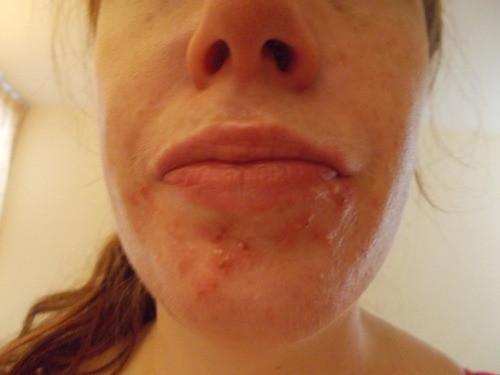
As this is pretty much the end of the first week on my baby dose of 10mg a day I thought that I should mention any side effects/changes I’ve noticed. To be honest apart from the initial breakout starting, which I really hope is what this yuck on my face is, there hasn’t been anything else that bad really. I took my first two days’ worth of tablets in the morning with breakfast but noticed that I felt quite nauseas and headachy an hour or two later so have now switched to taking them with dinner, which is working out a lot better. My skin and scalp have been a bit itchy on and off this week and my lips do feel quite dry and tight but not really any worse than they would normally. I’ve also noticed that my mood has fluctuated a bit more but not anything really worrying or massively noticeable. To be honest I wasn’t expecting anything dramatic on 10mg a day. I guess we shall see what happens in the next week and when I go up to 20mg a day in a week’s time!
#roaccutane#accutane#isotretinoin#side effects#dry lips#pustule#acne#inflamed acne#adult acne#hormonal acne#spots#popping spots#initial breakout#10mg#nausea#headache#itchy#dry#mood swings#breakout
0 notes
Text
Getting Roaccutane – The Process
The process for getting put on Roaccutane shouldn't be particularly complicated but there are quite a few important steps that have to be taken before it can be prescribed. The reason I use the word should is because for me it was a bit of a nightmare. First off you have to be referred to a dermatologist – a GP cannot prescribe Roaccutane. In my case my GP referred me through the NHS choose and book system but only gave me 1 hospital to choose from, thereby giving me no choice at all. The waiting time for the first available appointment was 2 months, which is pretty much standard but bear in mind that I live in London so if I had been given more choice then this could have been shorter.
A day before my appointment, I got a call from the hospital saying that the appointment had to be rearranged. I was absolutely gutted. I’d be looking forward to the appointment for so long so for them to turn around and say that and then give me no indication of when the appointment would be was frustrating to say the least.
After an overly emotional and out of proportion phone call with my mother, I found out that I was part of a scheme run by a health cooperative who would fund my first part of care privately until it was taken up by the NHS. I arranged a private dermatology appointment with a dermatologist who worked at the NHS hospital I had been referred to, and booked a follow up there 2 months later.
When I saw the dermatologist she recommended Roaccutane as my ultimate treatment plan as everything else hadn't worked and my skin was starting to scar in places. I was given another course of antibiotics until my follow-up appointment (to try and calm my acne), advised to sort out any contraceptive issues and arrange a blood test a week prior to my appointment. In order for Roaccutane to be prescribed, an effective method of contraception, preferably two, have to be used for at least a month prior to taking it – for the whole duration of the course – and the month afterwards. This is because the drug can cause serious birth defects in a growing foetus and so pregnancy must be prevented. The blood test is done to check liver enzyme function, cholesterol, triglyceride and blood sugar levels as the drug can affect these.
In my follow-up appointment, I was given a form to sign to say that I understood the risks of the drug with regards to pregnancy and that I would have an abortion if I became pregnant on the drug. I was given a pregnancy test, which came back negative (phew!) and my blood test had come back with acceptable levels. The treatment plan that we decided on was to take 10mg (low dose) a day for 2 weeks to try and minimise the side effects and get me used to it, then up this to 20mg a day for about a month before deciding whether I should be increased to 30 or possibly 40mg a day after this.
The decision to take this drug was not a light one. After struggling with my skin for nearly 10 years and having it massively affect my self-confidence at times, I decided that this would be the best option. For me, despite the side effects, fear-mongering and controversy that surround this drug I figured that potentially a couple of months of unpleasantness are worth the results in the end. I have seen the long-term transformation in peoples' skin, confidence and happiness from this process and for me this grossly outweighs the negatives.
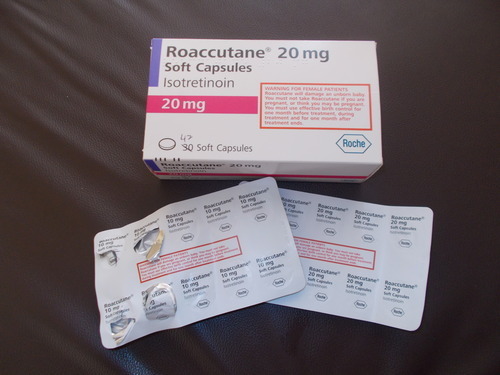
#roaccutane#accutane#isotretinoin#dermatologist#acne#scarring acne#blood test#birth defects#self confidence#waiting time
0 notes
Text
Skin History - Part 2
After Duac, it was decided that I should try another antibiotic Lymecycline, but this time it would be taken orally, not applied topically. Again, this worked very quickly – within a month my skin was clear and continued to be so for another 5 months until it stopped working. From then on it was a similar story with a large variety of medications, which I have listed and described below:
Oxytetracycline (antibiotic) – did very little (3 months)
Azelaic acid (topical) - did nothing (3 months)
Lymecycline (second course) – did nothing (surprise surprise!!)
Doxycycline (antibiotic) + benzoyl peroxide 2.5% (topical) – WORKED… for 5 months
Benzoyl peroxide 2.5% – did nothing on its own (4 months)
Freederm gel (nicotinamide) – did nothing
Zineryt (erythromycin/zinc complex; antibiotic topical) – irritated my skin badly
Minocycline (antibiotic) – did nothing (3 months)
Differin gel 0.1% (topical retinoid) - made my skin a hundred times worse (4 months)
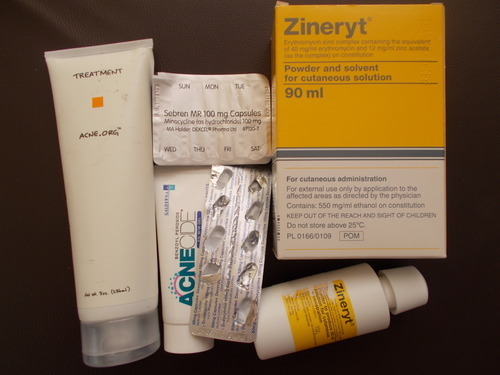
By this stage, Roaccutane had already been suggested a couple of times but I wanted to exhaust all my other options first. I recognise that it is a strong treatment and last-line and really did not want to be taking it unless I had to. Differin as mentioned above was the last treatment I used before embarking on my Roaccutane journey.
The experience with Differin also made me a lot more apprehensive about Roaccutane because it made my skin a lot worse and is the same class of drug (retinoid). However, it is less potent, is a topical treatment (which tend to overly dry and irritate my skin without any benefit), and has to be used continuously and for a long time to get good results and maintain them. I am also of the opinion that it generally tends to work best for people with non-inflammatory or mild acne – not cystic or extremely inflamed acne although some people do see results in these cases.
I think it’s also important to note here that my acne is in all likelihood hormonal in origin as I get it in the areas typically associated with this and my mum also had acne like this when she was in her 20s. I firmly believe that the oral contraceptive would have made a huge difference to my skin. However, I cannot take this as I get very severe migraines and the pill sets them off so this was never a viable option for me.
I also tried cutting various things out of my diet, which included dairy products and white carbs to try and improve my acne, as well as taking various supplements - evening primrose, dong quai, garlic, starflower oil, vitamin E, zinc, cod liver oil and lysine. I feel that these changes did benefit my health but never made any appreciable difference to my skin.
It was after all of this that I made the decision to see a dermatologist and begin the process for Roaccutane.
#acne#adult acne#hormonal acne#roaccutane#accutane#isotretinoin#lymecycline#oxytetracycline#azelaic acid#benzoyl peroxide#freederm#zineryt#minocycline#differin#retinoid#dermatologist#skin problems#skin#nicotinamide#antibiotics#antibiotic resistance#oral contraceptive#the pill#cystic acne#inflamed acne#supplements
2 notes
·
View notes
Text
Skin History - Part 1
Hi guys – I'm basically writing this blog to document my progress (hopefully) and experiences with Roaccutane (isotretinoin) after a number of failed treatments have led me to this point. I've split the post into 2 parts because it is a bit of a saga.
I started getting acne when I was about 15, and it was always pretty manageable up until I turned 20. I would get the occasional nasty breakout (always around the chin and mouth) but they didn't tend to last too long and generally I would have a couple that I could cover so it didn't really bother me too much. I think it’s important to note at this stage that I'm not deluded and I recognise that my acne isn't severe but it is incredibly persistent, which will become apparent in part 2. Apart from when I have been on antibiotics, my skin has NEVER been completely clear naturally since I was about 14.
It was when I turned 20 that the problem started to get a little more entrenched. After trying all the skincare products marketed for problem skin as well as benzoyl peroxide gel, with little to no results and after experiencing a particularly nasty and sore breakout I went to the doctor for some help.
The first medication that I was prescribed was Duac gel, which is a topical antibiotic (clindamycin) that contains 2.5% benzoyl peroxide as well. This was, honest to God, AMAZING! I had never seen/expected a product to work so fast and so effectively. Within a week my skin had cleared completely and aside from a little dryness from time to time, this was utterly incredible. I forgot what it was like to have spots, and actually looked forward to looking in the mirror when I woke up rather than fearing that dreaded moment! However, about 5-6 months down the line, and without any information from the doctor with regards to stopping/tapering treatment or the possibility of antibiotic resistance – it stopped working. I was absolutely gutted. The acne came back and if anything with a vengeance – they were bigger and sorer and harder to cover. This was also just in time for Christmas and New Year – just when you want to look your best for all the festivities – brilliant timing!
From then on I tried a whole variety of other antibiotics and topicals, which I shall elaborate on in the next post.
#roaccutane#accutane#duac#acne#spots#benzoyl peroxide#isotretinoin#hormonal acne#skin#breakout#clindamycin#adult acne
0 notes